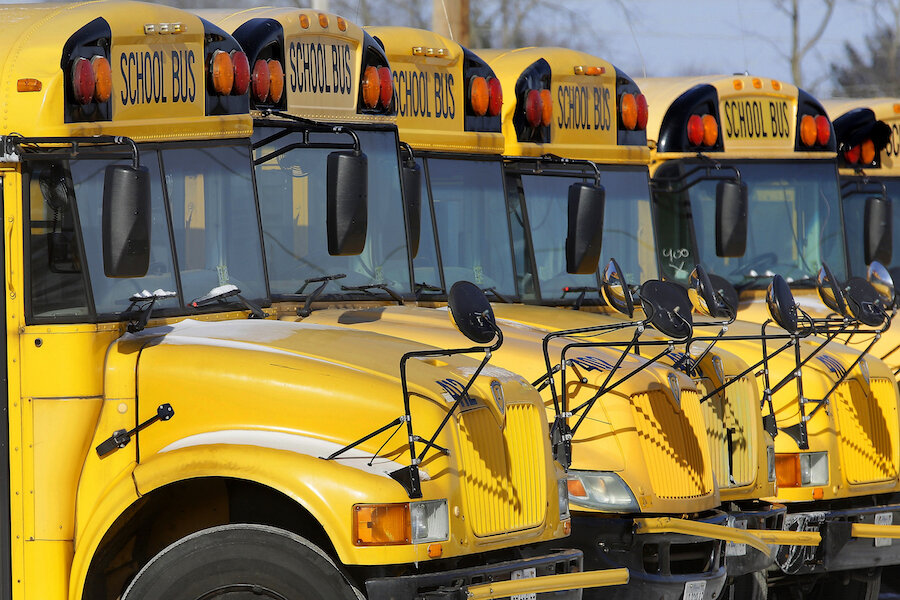The ultimate back-to-school shopping guide: When, where, and how to save
Loading...
You know how to make the grade in school: Do the homework and study the course material. But getting straight A’s in stocking up on school supplies doesn’t exactly come with a rulebook.
That’s why we made one. We have the when, where and how of shopping for the 2016 back-to-school season — saving money while you’re at it.
Pinpoint when to buy
If you’ve been waiting for the right time to start shopping, now’s your chance.
Sales tax holidays are saving shoppers money on back to school in 17 states across the country in 2016. These limited-time events often fall in August, and they give shoppers a break on sales tax in certain school-oriented product categories, such as apparel and electronics.
But even if your state doesn’t participate — or you missed it — expect back-to-school sales to continue throughout August and into September. In August, retailers offer deep discounts on writing utensils, backpacks and more.
That’s welcome news. Families with children in grades K-12 plan to spend an average of about $670 on 2016 back-to-school shopping,according to the National Retail Federation.
If sales don’t impact enough of your purchases, and you can’t afford to buy everything at once, spread it out. Students generally need the essentials — a backpack and a lunch bag — on the first day of school, but some items — markers and glue — can wait. Make less crucial purchases in September, if necessary.
» MORE: What to splurge (and skimp) on for back-to-school
Map out where to shop
For 55% of Americans, price is the most influential factor in deciding whether to buy specific back-to-school items, according to a 2016 survey by cash-back website Ebates.
To get the best deal, you have to know where to find sales. We rounded up some of the stores with the best back-to-school discounts, including budget supplies and generous price-matching policies.
Kmart: If your money is going toward summer vacation and school spending, you might not be able to check off the entire supply list right now. Kmart is offering to help with no-penny-down in-store layaway. This offer is valid on new layaway contracts through Aug. 20. Some exclusions may apply. If you choose online layaway, you’ll need to put one penny down.
Staples: Office supply store Staples won’t just match competitors’ prices — the retailer promises to give you “extra credit,” too. Through Sept. 17, prove a qualifying competitor has a lower price on an identical item, and you’ll get the lower price plus 10% of the difference. To redeem, bring proof of a qualifying lower price to the store or call 800-333-3330.
Target: School supplies start at just 99 cents. The store also matches the prices online competitors charge for items such as laptops and backpacks. Competitors include Amazon.com, BestBuy.com and Costco.com.
Wal-Mart: Back-to-school shoppers can buy more than 300 classroom essentials for less than $1, more than 600 items for less than $2 and more than 1,000 items for less than $3, according to a store spokesperson. For instance, a 24-count box of Crayola crayons will run you just 50 cents.
» MORE: The do’s and don’ts of back-to-school shopping
Implement savings techniques
You know where and when to buy, but how else can you save? Here are NerdWallet’s best school shopping tips:
- Find the best price. Compare prices from multiple retailers by conducting a Google search or using a tool like ShopSavvy. In most cases, you’ll need proof of a competitor’s price if you want to request a price match.
- Do the math. Calculate the price per unit to make sure you’re getting the best deal, even when items are sold in different amounts. Paying $6 for a pack of 20 pens (30 cents per pen), for instance, is better than paying $4 for a four-pack ($1 per pen).
- Know the return policy. Check the store’s return policy before you make major purchases, such as laptops and tablets. It’s usually listed on the website. Look for the length of the return window and any items that are final sale or non-returnable.
- Buy online, pick up in store. Many retailers give their shoppers incentives to buy online and pick up their items in store. Some offer free shipping to your local store — including Kohl’s and Wal-Mart — while others discount your order or, like Macy’s, provide a coupon for next time.
- Shop with a credit card. Using credit cards for back-to-school shopping can boost your savings, thanks to promotional deals and cash-back offers. Some give bonus points for purchases at department stores or wholesale clubs.
Courtney Jespersen is a staff writer at NerdWallet, a personal finance website. Email: courtney@nerdwallet.com. Twitter: @courtneynerd.
This article first appeared in NerdWallet.







